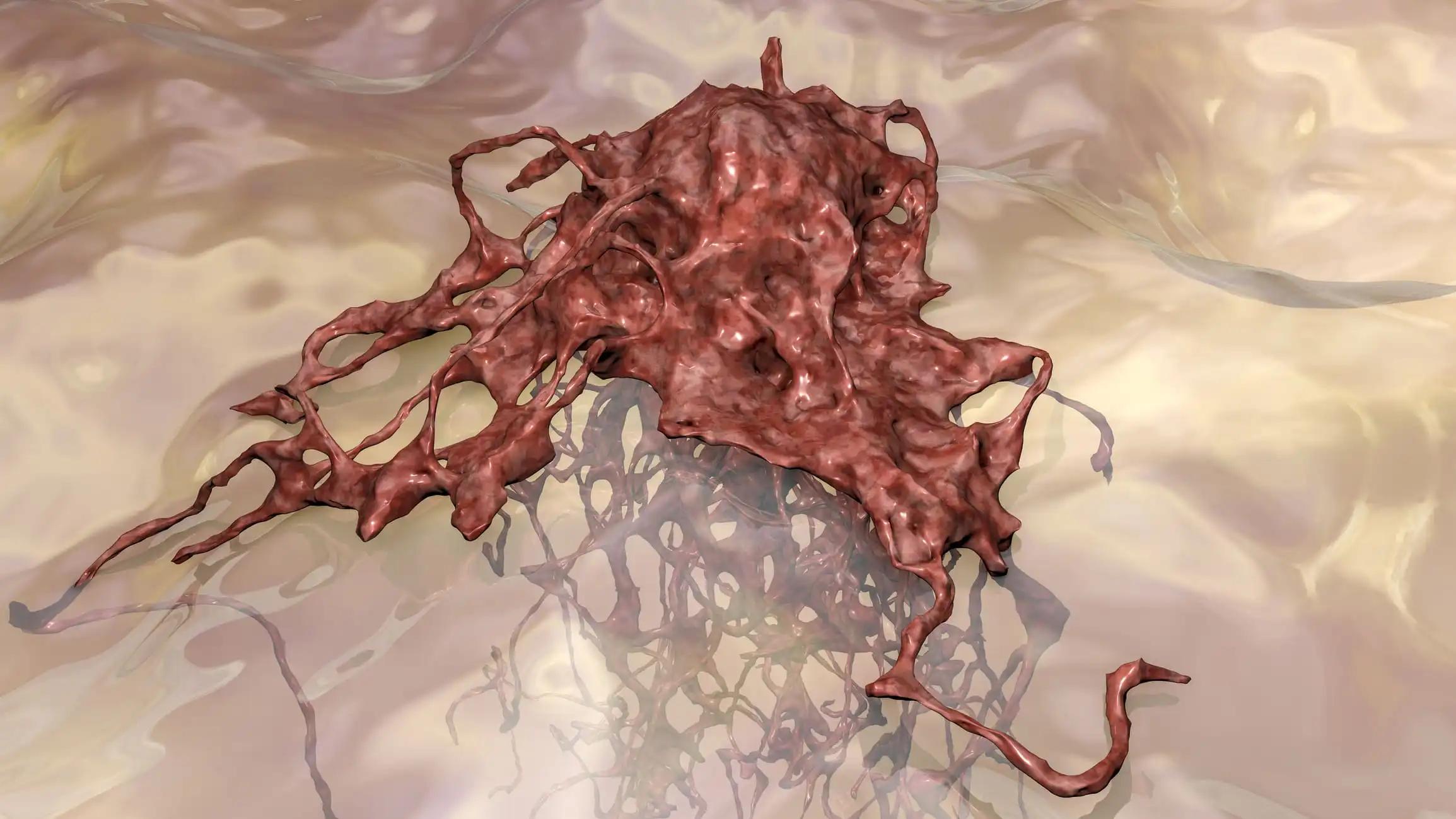KEY TAKEAWAYS
- The phase 3 study explored the molecular features in untreated mUM with long survival on tebentafusp.
- Reduced immunosuppression, lower cytokines, and early ctDNA decrease link to 3+ year survival on tebentafusp in untreated mUM.
In a primary analysis of the Phase 3 IMCgp100-202 study for previously untreated metastatic UM [NCT03070392], tebentafusp demonstrated a significant improvement in OS compared to the investigator’s choice treatments [HR 0.51].
Researchers are investigating tumor biopsies and serum molecular markers to predict long-term survival (≥3 years) on tebentafusp. In this phase 3 trial involving first-line metastatic uveal melanoma patients with HLA-A*02:01 positivity, participants were randomly assigned to either receive tebentafusp or standard treatments.
The primary goal was to assess overall survival. As of the November 2022 data cutoff, the study analyzed serum cytokines in 226 patients treated with tebentafusp and 76 receiving standard treatment.
Tumor biopsies were available from 176 patients on tebentafusp and 72 on standard treatment, analyzed using immunohistochemistry with specific antibodies. Additionally, 202 sera collected at baseline and week 9 on tebentafusp were examined for ctDNA mutations in 15 genes.
In the study, 378 patients were assigned to receive either tebentafusp (245) or standard treatments such as pembrolizumab (77), ipilimumab (11), or dacarbazine (7). After a median follow-up of 22 months, the estimated three-year overall survival rate for patients on tebentafusp was 27% (95% CI 22–34), whereas those on standard treatments showed an overall survival rate of 13% (95% CI 7–23).
Researchers found that at the study’s outset, the expression of gp100 in the tumor wasn’t linked to longer overall survival among patients receiving tebentafusp. However, a lower CD163:CD3 ratio in tumor biopsies or reduced serum levels of specific cytokines like IL6, IL10, CXCL10, CXCL11, and MCP1 were associated with extended survival in patients on tebentafusp but not in those on standard treatments.
The combination of a low tumor CD163:CD3 ratio and reduced serum IL10 levels showed the strongest association with longer overall survival. This subgroup also exhibited extended survival rates in a previous study (Ph2 IMCgp100–102) involving treated metastatic uveal melanoma patients (3-year OS 46% (95% CI 28–74)).
Among patients receiving tebentafusp, 13 out of 18 (72%) whose ctDNA was assessable and survived for three or more years cleared their ctDNA at week 9 after starting tebentafusp. Additionally, 5 out of 18 patients experienced a reduction of 50% or more in ctDNA levels.
The study revealed that a tumor microenvironment with lower levels of immune suppression, reduced inflammatory cytokines in the blood, and a decrease in ctDNA by week 9 is linked to improved overall survival of three or more years among patients with previously untreated metastatic uveal melanoma receiving tebentafusp.
Source: https://jitc.bmj.com/content/11/Suppl_1/A35
Clinical Trial: https://clinicaltrials.gov/study/NCT03070392
Orloff M, Kim K, Stanhope S, et al30 Molecular features associated with long survival on tebentafusp in previously untreated metastatic uveal melanoma in a phase 3 trialJournal for ImmunoTherapy of Cancer 2023;11:doi: 10.1136/jitc-2023-SITC2023.0030.



